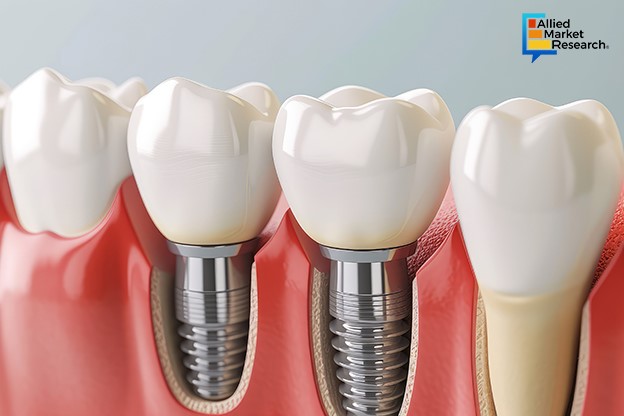How Do Bioimplants Support Minimally Invasive Surgical Techniques?

20 Jun
2024
Highlights
- Introduction
- Discovery of bioimplants from stem cells
- Recent developments in the industry
Bioimplants are advanced medical devices developed for insertion into the human body to replace or enhance biological functions. They range in complexity and purpose, from simple implants like dental fixtures to complex systems such as artificial joints, neural implants, and pacemakers. These devices aim to enhance the quality of life for individuals with medical conditions or injuries by restoring impaired functions. Recent technological advancements have also enabled the creation of bioimplants equipped with sensors and wireless abilities, facilitating real-time monitoring of body functions and remote adjustments as needed.
The bioimplants industry is witnessing transformation due to the surge in the prevalence of cardiovascular diseases, the high geriatric population, and the growing adoption of orthopedic implants for joint treatment and other diseases. The industry is projected to display the fastest CAGR of 8.8% by 2035. Patients and healthcare providers are opting for minimally invasive procedures due to their lower risk of complications, improved patient outcomes, and reduced recovery time. This shift in preference has led to a higher demand for bioimplants, which are essential for these procedures.
Moreover, advancements in 3D printing technology have facilitated the customization and manufacture of bioimplants for individual patients. This technological ability enables the creation of complex shapes and personalized implants that precisely match a patient's anatomy, thereby enhancing the effectiveness of the implantation procedure.
First cardiac bioimplant for myocardial infarction by using umbilical cord stem cells
The innovative advanced therapy drug PeriCord, designed to heal the hearts of myocardial infraction patients, validates the potential of new treatments utilizing tissue engineering and stem cells to streamline tissue regeneration. This novel medication, derived from pericardium stem cells and umbilical cord sourced from tissue donors, represents a pioneering tissue engineering product, a form of latest therapy integrating optimized tissues and cells in laboratory settings. The treatment is administered to patients going through coronary bypass surgery, targeting the repair of scar tissue in the heart area affected by myocardial infarction, where the ability to contract was lost due to interrupted blood flow.
The implementation of this novel therapy took place nearly four years ago (in 2020) through a collaboration of the BST (Banc de Sang i Teixits) and the ICREC Group at the Germans Trias i Pujol Research Institute. PeriCord is composed of a membrane sourced from the pericardium of donors, which BST has lyophilized and decellularized. This membrane is subsequently recellularized with umbilical cord stem cells. In the surgical setting, doctors fix the bioimplant in the laboratory to the affected region of the heart. After a year, the implanted tissue adheres to and integrates with the heart's natural structure, healing the scar caused by the cardiac arrest.
Orthopedic implant company announced FDA clearance of its high-value dorsal spanning plate
OIC (Orthopaedic Implant Company) achieved the FDA clearance for the high-value dorsal spanning plate in April 2022. This new addition to OIC’s orthopedic trauma implant range enhances the clinical potential of their DRPx wrist fracture plating system, establishing it as a cost-effective alternative to existing premium-priced plating systems in the industry.
DRPx was introduced in August 2021 and is the sole high-value distal radius plating system accessible in the U.S. This system adapts to the diverse technique preferences of orthopedic surgeons, offering substantial cost savings opportunities. It aims to enhance the financial sustainability of hospitals, patients, and ambulatory surgery centers.
CurvaFix introduced the Smaller-diameter CurvaFix® IM implant
A developer of medical devices for repairing fractures in curved bones, CurvaFix, Inc., announced the launch of its CurvaFix® IM Implant in February 2023. This implant is designed to provide robust, stable fixation for patients with smaller bones and simplify surgeries. The new 7.5mm intramedullary device was implanted in over two dozen patients. The implant was presented at the AAOS 2023 Annual Meeting in Las Vegas.
To sum up, the evolving landscape of bioimplants revolutionized medical care with innovations like personalized 3D-printed implants and advanced therapies. These advancements enhance patient outcomes through customized solutions and highlight the industry's commitment to advancing biotechnological operations for improved quality of treatment.
To sustain the bioimplants industry with well-informed decisions and investment opportunities, feel free to Contact us!

Koyel Ghosh
Author’s Bio- Koyel Ghosh is a blogger with a strong passion and enjoys writing in miscellaneous domains, as she believes it lets her explore a wide variety of niches. She has an innate interest in creativity and enjoys experimenting with different writing styles. A writer who never stops imagining, she has been serving the corporate industry for the last five years.
Avenue: Entire Library membership of Allied Market Research Reports at your disposal
- Avenue is an innovative subscription-based online report database.
- Avail an online access to the entire library of syndicated reports on more than 2,000 niche industries and company profiles on more than 12,000 firms across 11 domains.
- A cost-effective model tailored for entrepreneurs, investors, and students & researchers at universities.
- Request customizations, suggest new reports, and avail analyst support as per your requirements.
- Get an access to the library of reports at any time from any device and anywhere.
Related Post
-
How are Submarine Cables Transforming Global Connectivity with Enhanced User Experience?
-
Endoscopy Procedures: Transformations in Techniques and Applications
-
AI-Powered Video Analytics: How the Product Actually Works for enterprises
-
Painting Robots: Transforming Precision Coating and Creative Applications
-
Innovations in Pharmacovigilance Systems Advancing Patient Safety
-
Understanding Edge Security: Keeping Data Safe Near the Source
-
Exploring the Use and Advancements of 3D Laser Scanners in Professional Applications
-
Reinforcing Industrial Controls with Smarter Tools and Training








